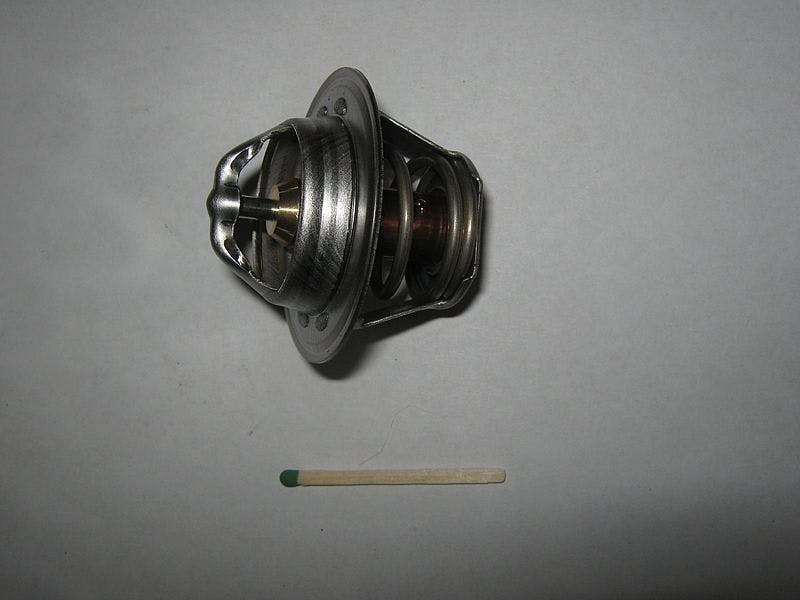The engine does not heat to the correct temperature: Where is the problem?

The temperature of the coolant is very important for the correct and efficient operation of the engine. Every engine has a certain ideal working temperature that it needs to reach for its optimal operation.
For proper engine operation, the ideal coolant temperature is between 80°C to 90°C (176 to 194 degrees Fahrenheit), depending on the type and construction of the engine.
Indholdsfortegnelse
Introduction
If the engine is not optimally warmed up and its temperature is lower than it should be, it shows higher fuel consumption, worse operation, and higher noise. In addition, due to the low temperature, friction is also increased, leading to greater wear of all engine parts.
But what causes the problem when the coolant temperature indicator does not reach the optimal engine temperature? This problem may be due to a failure of some engine components, most often a failure of the thermostat or the coolant temperature sensor.
How does a bad thermostat manifest itself?
A problem with a bad thermostat manifests in a too-high or, conversely, low coolant temperature. To put it simply, the engine either overheats or does not heat up to the correct temperature. Both of these cases are serious, and solving them as soon as possible is necessary.

Blue Engine Coolant Light: What does it mean? 🥶
Suppose the engine cannot warm up to its correct operating temperature. In that case, you will find out very easily that the coolant temperature indicator does not climb higher than 70°C (or slightly above 150 degrees Fahrenheit).
In addition, this problem is also manifested by very weak heating, or rather the car heats up, but about the same as when you start it in the morning after it has been standing all night on a frozen street.
How does the thermostat affect the temperature of the coolant?
A thermostat is a device that controls the flow of coolant in the engine's cooling circuit. The task of this device is to control the cooling circuit and to reach and maintain the optimum operating temperature of the engine as quickly as possible.

Thermostat: How does it work?
When the engine is cold, the water pump supplies coolant only to the cylinder block casing and head. The coolant is returned to the pump through the bypass hose from the head and the engine block because the thermostat is still closed.
After reaching the optimal operating temperature, the thermostat valve opens. The coolant begins to flow through the entire cooling circuit into the radiator, where the flowing air cools the coolant.
Maintaining the optimal temperature is controlled by the opening and closing of the thermostat valve, which is carried out using wax, paraffin, and similar fillings in the thermostat. When the desired temperature is reached, the wax liquefies and expands, pushing against the piston, which opens the thermostat valve.
In the latest car models, however, you can find electrically controlled thermostats, which can control the cooling more precisely.
However, the thermostat valve must open at the right moment - not too early, but not too late. If the thermostatic valve were to open too soon, the engine would warm up slowly and poorly and would not maintain the optimal operating temperature. If the thermostat opened too late, the temperature would be too high, and the coolant would boil.
How does a bad coolant temperature sensor manifest itself?
If it's a bad coolant temperature sensor, the problem is a bit more specific. Suppose it's a malfunction of this sensor. In that case, it's not a problem with the engine overheating or not overheating, even though it may seem that way at first glance because the coolant temperature gauge can strike and jump on the temperature scale as it pleases.
However, this is not the only problem because this sensor is not only used to show the temperature of the coolant. The coolant temperature sensor is an essential component that controls the entire operation of the engine. Since this sensor interferes with almost everything related to the engine's operation, it can also cause various problems, from a bad engine start to RPM fluctuations and too high fuel consumption.

The coolant temperature sensor records coolant temperature data and then sends this data to the engine control unit. Sensor data is one of the important pieces of information used by the engine control unit to determine the state of the engine and change the engine's operating mode accordingly.

Engine Control Unit: What is its function?
With the help of data from the coolant temperature sensor, the control unit affects the fuel dose, ignition timing, injection time, and idling speed. Some engines use dual sensors.
These are two sensors, one of which informs the ECU about the state of the engine, and the other serves as the coolant temperature indicator on the dashboard. Therefore, if only the sensor intended for the coolant temperature indicator leaves, it is not be such a problem.

High Fuel Consumption: 14 most common causes
A much worse situation occurs if the coolant temperature sensor, which informs the engine control unit about the state of the engine, fails. In this case, you may encounter various problems, such as increased fuel consumption, which is caused by bad information about the engine temperature (the ECU gives a larger dose of fuel as if the engine were cold), difficult starting, unstable engine operation, or increased idling speed.
Conclusion
Whether it is a malfunction of the thermostat or the coolant temperature sensor, it is not worth waiting, and it is necessary to solve this problem as soon as possible.